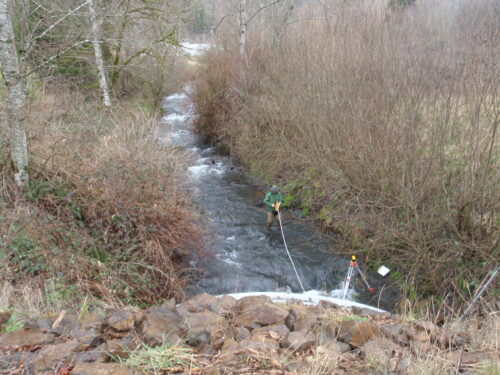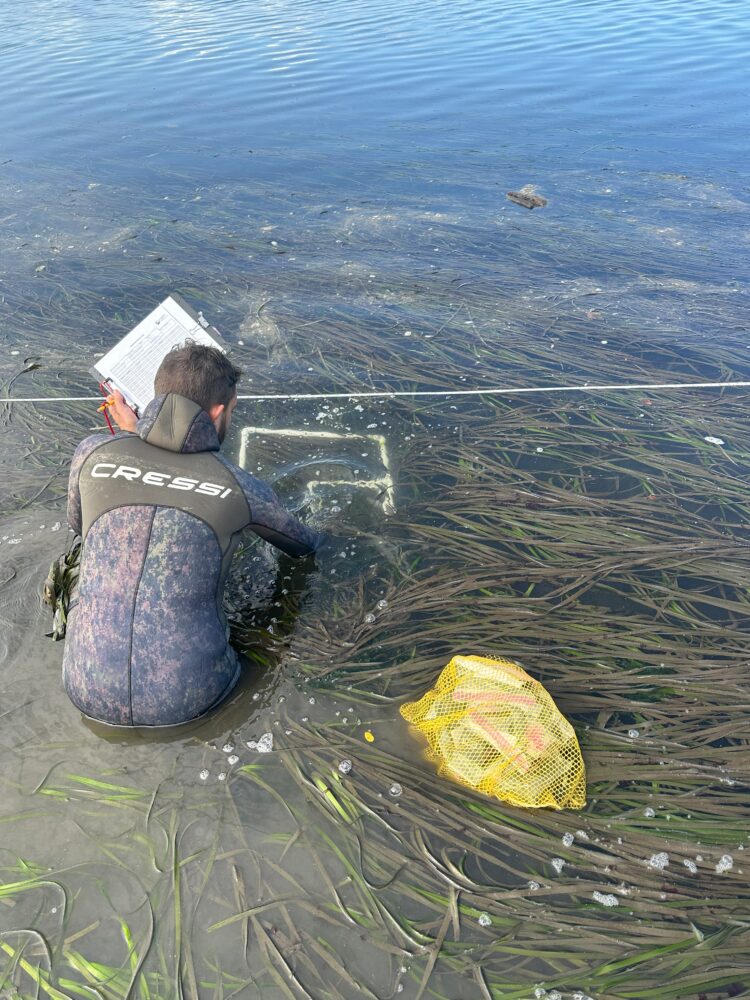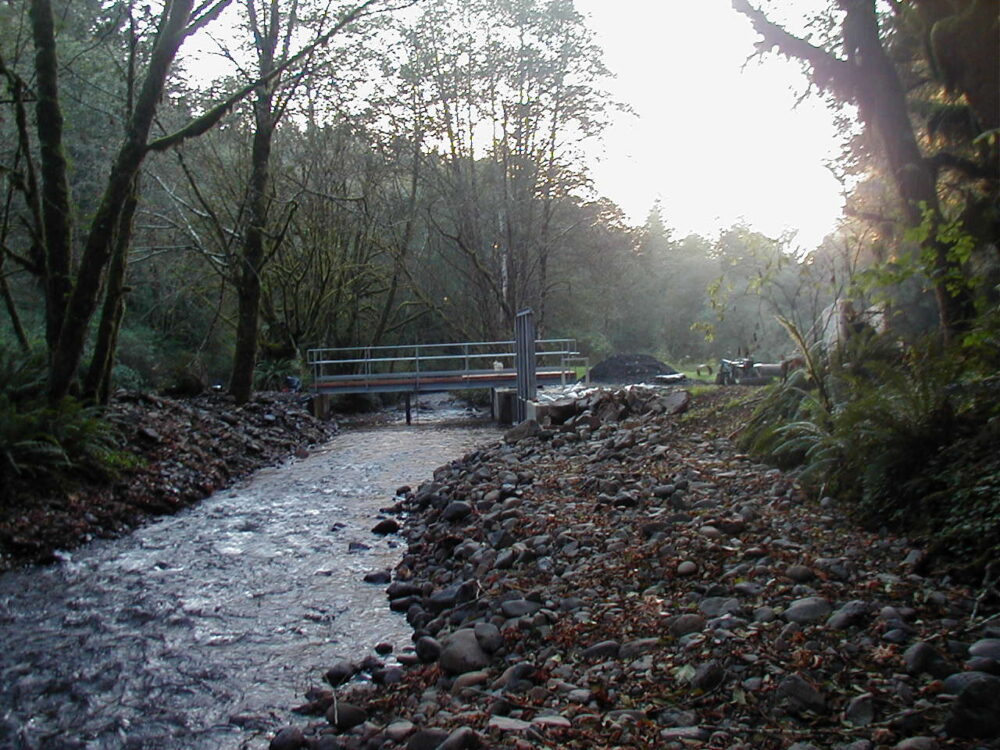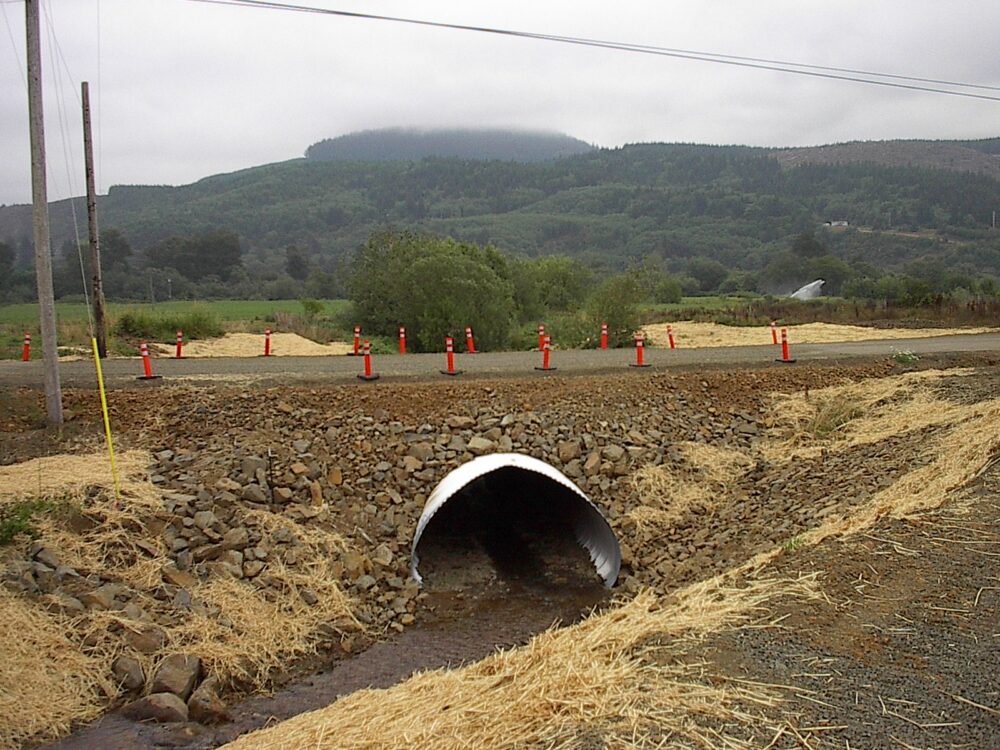Progress

- Pre-assessment (Completed)
- Project Design (Completed)
- Project Started (Completed)
- Project Finished (Completed)
- Monitoring Active (In Progress)
Nestucca Basin’s Wolfe Creek Get’s a Makeover
Introducing Nestucca’s new destination point for salmon – Wolfe Creek. That’s right, in 2007 the Tillamook Estuaries Partnership (TEP) and 16 other partners enhanced salmon spawning and rearing habitats, installed a fish passable culvert at the creek’s mouth, and re-established vegetation in riparian (or streamside) areas. The primary project goal was to increase coho, fall chinook, winter steelhead, and cutthroat populations in Wolfe Creek.
Project Details
Wolfe Creek meanders through US Forest Service (USFS) and private agricultural land before emptying into the Nestucca River, just east of Beaver. Lower watersheds are typically privately-owned farmed floodplains, where project implementation can be difficult. However in 2004 local landowner, John Barcroft Jr., contacted the Oregon Department of Fish and Wildlife (ODFW) regarding a fish barrier culvert and improving salmon habitat in his family’s section of Wolfe Creek. ODFW invited TEP, a local non-profit organization and National Estuary Project, to lead the effort.
Three years later TEP demonstrates that habitat enhancement and agricultural practices can work in conjunction. Private landowners allowed TEP to restore salmon habitats, which consequently achieved the landowners’ fencing and bank stabilization needs. Projects like Wolfe Creek are critical to salmon recovery and demonstrate that there are direct landowner benefits.
First, to address the lack of quality salmon habitats, TEP contracted with excavator and helicopter contractors to meticulously place 258 USFS-donated logs in natural configurations throughout nearly two miles of the creek. The logs trap spawning gravels, scour deep rearing pools, and provide predation cover. Averaging two-minute ‘turns’, the helicopter grappled one to three logs, placed them in the stream, and flew back to pick up the next load.
Second, being the only culvert on Wolfe Creek, a new bottomless arch culvert provides salmon passage to three miles of upstream habitats. Located 50 feet from the Nestucca River, the structure spans the stream channel at Wolfe Creek’s mouth. The old 9-foot wide culvert offered limited passage to migrating salmon taking a shot at entering Wolfe Creek from the Nestucca.
Finally, TEP hired local contractors to plant 800 native trees and shrubs, and install livestock fencing and off-channel watering stations. Previously impacted from grazing activities, Wolfe Creek’s lower reach is now fenced and planted; the makings of a healthy riparian area and clean water.
“Community involvements, particularly from private landowners, were integral to the success of this $400,000 project,” says Rachel Hoffman, TEP’s Habitat Restoration Manager. “The project represents an extraordinary opportunity, where partners used several restoration techniques to enhance a watershed and strengthen local, regional, and national partnerships,” she added.
All of the project components successfully endured mother nature’s first test – December 2007’s record flooding. None of the logs washed downstream and the culvert easily accommodated flood flows.



